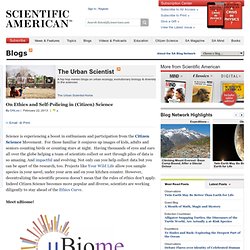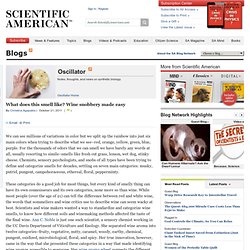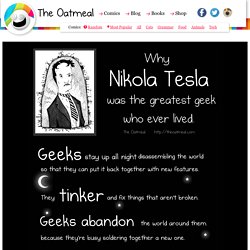

On “Media Refusal and Conspicuous Non-Consumption: The Performative and Political Dimensions of Facebook Abstention” I just did something that I’m sure is not on any “helpful tips” list for aspiring science bloggers.

Some users have "unliked" Facebook To write this post, I just copied a title from an academic journal and hit <CTRL> V in the headline field of WordPress. I wouldn’t usually do a cut and paste, but this title brought a big smile and, after all, isn’t consummate fascination the sine qua non of search engine optimization? The headline above also happened to top an article by Laura Portwood-Stacer, a visiting professor at NYU’s Steinhardt School of Culture, Education and Human Development, an article published online in the journal New Media and Society. The study kept me amused throughout because of my familiarity with the “WooHoo!!!” According to Portwood-Stacer, those who commit “Facebook suicide” or frequent the @NotOnFacebook Twitter account, or post to the hashtag #facebooksucks (Facebook no, Twitter si?)
Facebook refusal can also be interpreted in a Marxist-Marcusian framework. On Ethics and Self-Policing in (Citizen) Science. Science is experiencing a boost in enthusiasm and participation from the Citizen Science Movement.

For those familiar it conjures up images of kids, adults and seniors counting birds or counting stars at night. Having thousands of eyes and ears all over the globe helping a team of scientists collect or sort through piles of data is so amazing. And impactful and evolving. Not only can you help collect data but you can be apart of the research, too. Your Wild Life. Bees under the Microscope. Honey Bee Mid and Hind Gut.

Why Humans Like to Cry. Mind & Brain :: Mind Matters :: January 29, 2013 :: :: Email :: Print. Health - Do we all see the same colours? How walking through a doorway increases forgetting. Like information in a book, unfolding events are stored in human memory in successive chapters or episodes.

One consequence is that information in the current episode is easier to recall than information in a previous episode. An obvious question then is how the mind divides experience up into these discrete episodes? A new study led by Gabriel Radvansky shows that the simple act of walking through a doorway creates a new memory episode, thereby making it more difficult to recall information pertaining to an experience in the room that's just been left behind. What does this smell like? Wine snobbery made easy. We can see millions of variations in color but we split up the rainbow into just six main colors when trying to describe what we see–red, orange, yellow, green, blue, purple.

For the thousands of odors that we can smell we have barely any words at all, usually resorting to simile–smells like fresh cut grass, lemon, wet dog, stinky cheese. Vacuum Tube: Kids under 2 Should Not Watch Television. Every parent needs a break from time to time—a few minutes to prepare dinner, do the laundry or quickly check e-mail.

That's when the television suddenly becomes the best invention ever—an instant free babysitter that enthralls even the youngest infants and might, fingers crossed, even teach them a thing or two. But a new policy statement published today by the American Academy of Pediatrics suggests that not only do children under age two probably learn nothing from the television, but that watching too much can actually delay language development and cause attentional problems.
Study: Associating your car with your identity leads to aggressive driving. Media Contact: Jodi Briden, 215-204-7993, jodiw@temple.edu For more content from the Fox School follow us on LinkedIn A new study by a Temple University Fox School of Business professor finds those who view their car as an extension of themselves have stronger aggressive driving tendencies.

The study, “Aggressive Driving: A Consumption Experience,” is thought to be the first to comprehensively examine how personality, attitude and values contribute to aggressive driving behaviors. Driving is one of the most common consumptive behaviors, and aggressive driving causes a third of all accidents that involve personal injuries and two thirds of all fatal accidents in the United States. “It explains much of the phenomenon we knew existed,” said Ayalla Ruvio, lead author and an assistant professor of marketing. Ruvio’s article, published online in the Journal of Psychology & Marketing, takes a consumer behavior perspective of this phenomenon and features two studies conducted in Israel.
Binary - it's digitalicious! 10 Futuristic Materials. Lifeboat Foundation Safeguarding Humanity Skip to content Switch to White Special Report 10 Futuristic Materials by Lifeboat Foundation Scientific Advisory Board member Michael Anissimov. 1.

The rise of the 150-year-olds? S. Jay Olshansky, contributor Imagine a future in which people live happy and healthy to 150 (Image: Justin Pumery/Taxi/Getty) "THE trouble with the world is not that people know too little, but that they know so many things that ain't so. " So said Mark Twain, and his words were echoing in my head as I read 100 Plus. Would You Eat Synthetic Meat? - StumbleUpon. How Quantum Suicide Works".
Because Every Country Is The Best At Something. Ancient air-conditioning cools building sustainably. Built in the arid suburbs of Jaipur, Rajasthan, The Pearl Academy of Fashion combines modern exterior styling with ancient Rajasthani architecture -- designed to keep temperatures down without artificial cooling systems.

The entire building is raised above the ground and a pool of water -- integrated into a recreation and exhibition space -- keeps temperatures low through evaporative cooling. Why Nikola Tesla was the greatest geek who ever lived. Additional notes from the author: If you want to learn more about Tesla, I highly recommend reading Tesla: Man Out of Time Also, this Badass of the week by Ben Thompson is what originally inspired me to write a comic about Tesla.

Emergency and Disaster Information Service. The Science Behind &Having a Bad Day& (and How to Solve It)
Creative Thinking Is a Specific Process That Can Be Replicated. Bill Nye on creationism: &Your world view just becomes crazy& How Quantum Suicide Works&